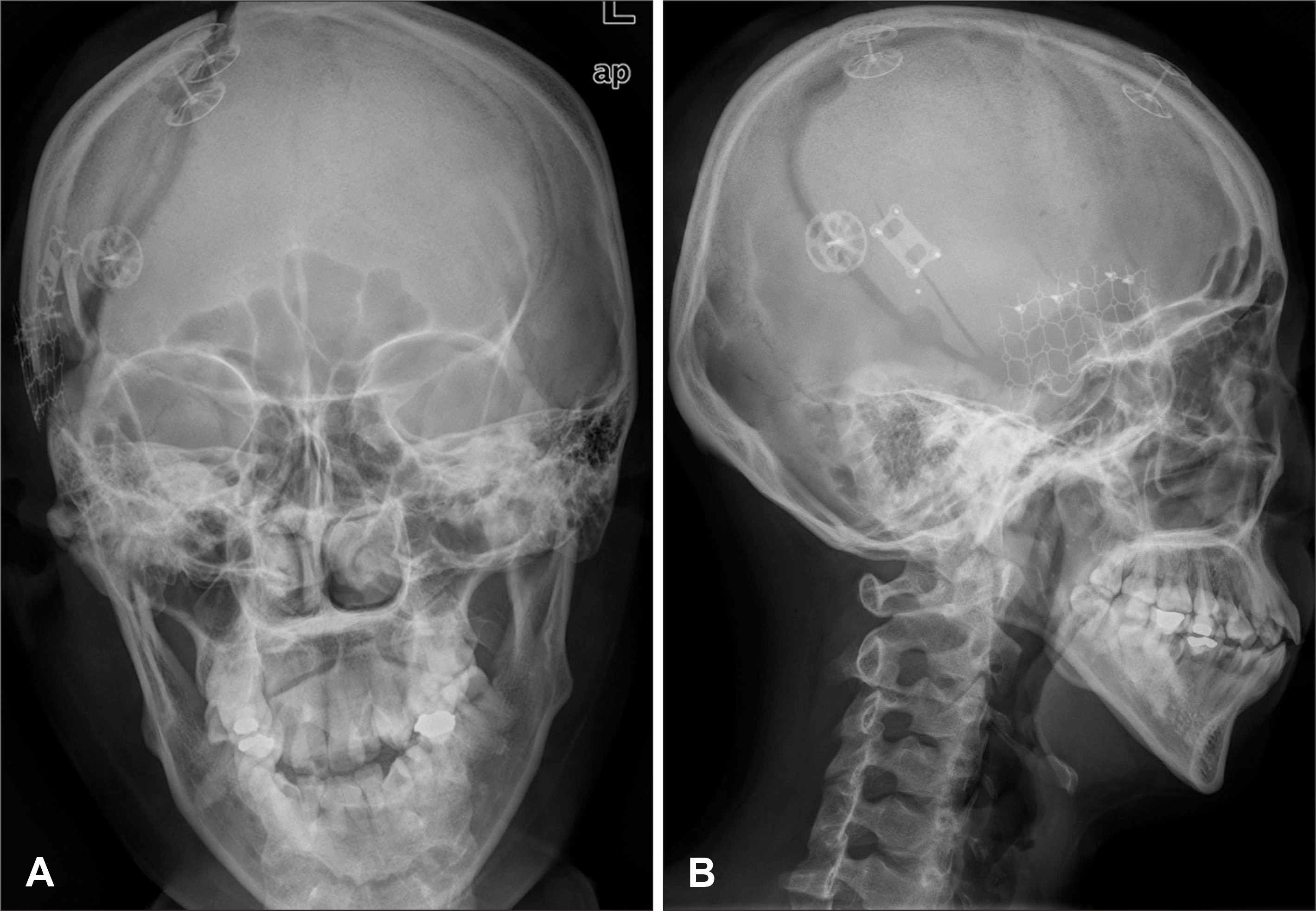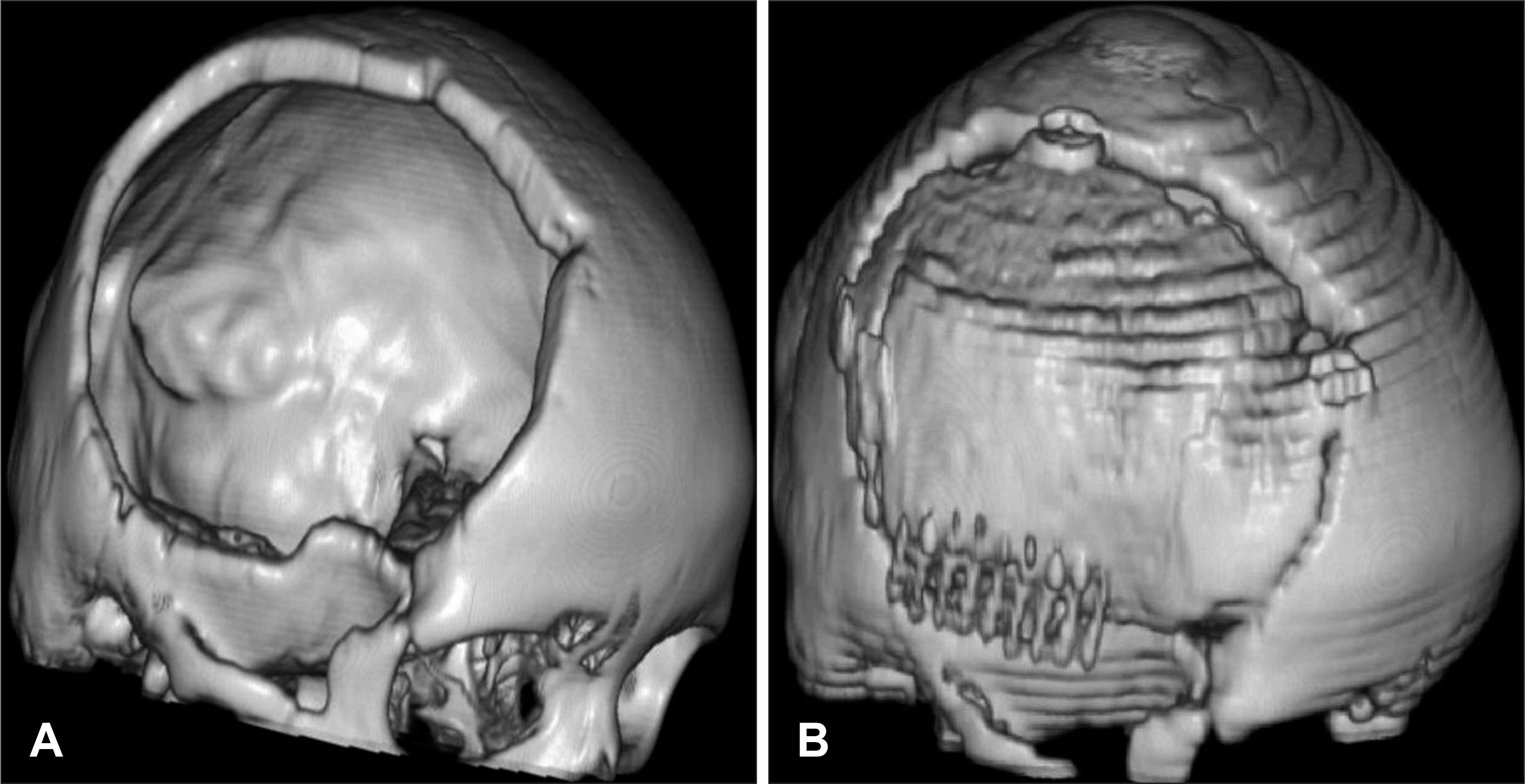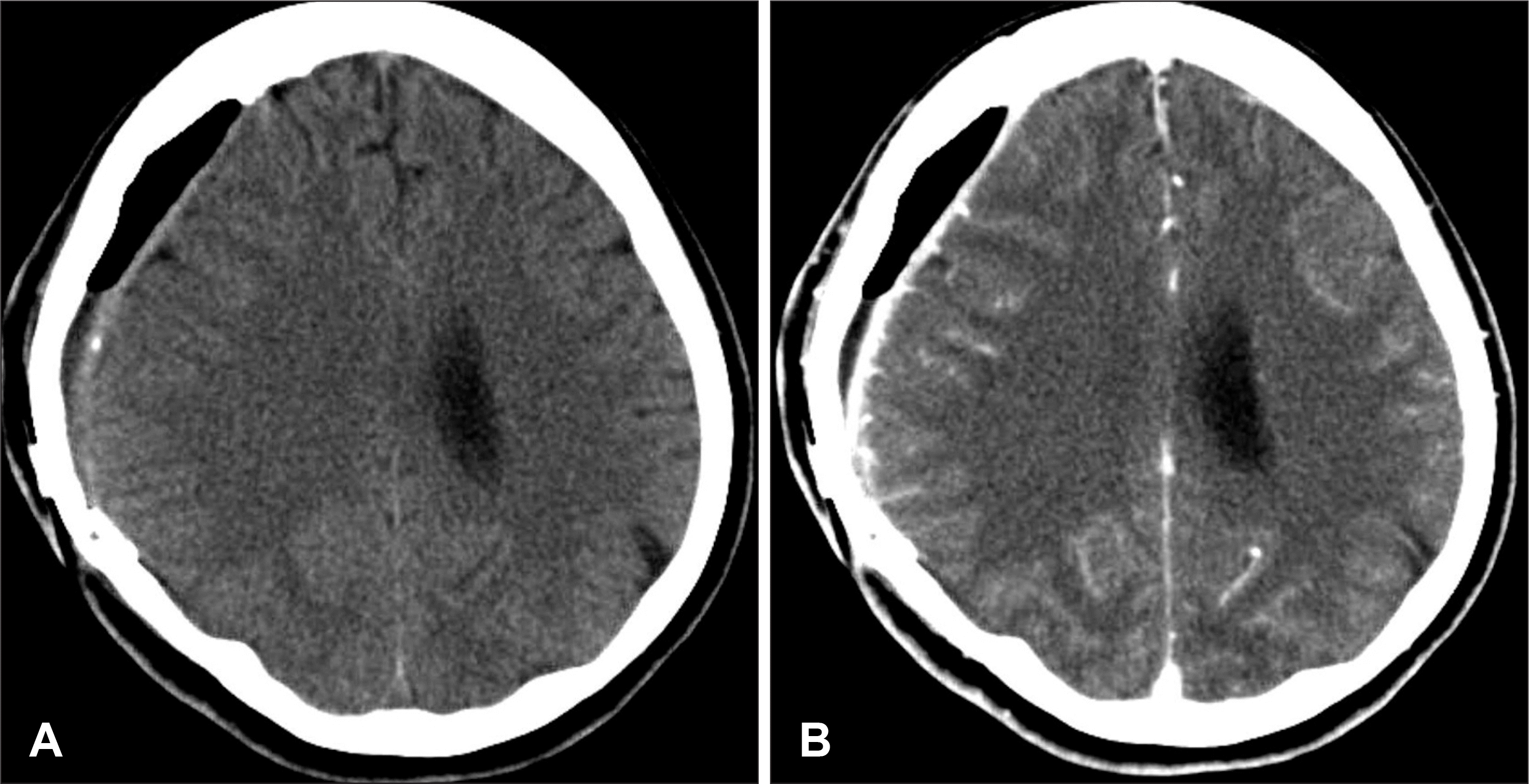Abstract
Objective:
After decompressive craniectomy was performed in patients with severe brain swelling, we were able to preserve autologous bone flap as freeze-preserved state or within abdominal subcutaneous tissue. The aim of this study was to compare the freeze-preservation with the subcutaneous abdominal preservation regarding the effectiveness and safety.
Methods:
The clinical data of 53 patients who underwent decompressive craniectomy with autologous bone flap cranioplasty in our department were studied retrospectively. 43 patients underwent cranial reconstruction using autologous bone flap stored in deep freezer. In 10 patients cranioplasty was performed to repair bone defect using autologous bone flap preserved in subcutaneous abdomen. The analysis included the rates of infection, bone absorption and other complications and operation time to compare these two methods.
Results:
Cranioplasty using deep-freezing bone flap showed a low infection rate (2.3%), low bone absorption (2.3%) and no cosmetic problem. The average time of operation is 146 minutes. Cranioplasty using a bone flap banked in the patient's abdominal wall revealed no case of complications. The average time of operation is 130 minutes. The longer period the bone flap was preserved for, the longer time the operation took in both methods.
Conclusion:
This study may be worth considering that both methods of cryoconservation and subcutaneous abdominal pre-servetion are feasible for the repair of skull defect although abdominal preservation seems to show better result a little. If the deep-freezer is not available, a bone flap banked in the patient's abdominal wall can be used.
REFERENCES
1). Aarabi B., Hesdorffer DC., Ahn ES., Aresco C., Scalea TM., Eisenberg HM. Outcome following decompressive craniectomy for malignant swelling due to severe head injury. J Neurosurg. 104:469–479. 2006.

2). Baldo S., Tacconi L. Effectiveness and safety of subcutaneous abdominal preservation of autologous bone flap after decompressive craniectomy: a prospective pilot study. World Neurosurg. 73:552–556. 2010.

3). Bhaskar IP., Zaw NN., Zheng M., Lee GY. Bone flap storage following craniectomy: a survey of practices in major Australian neurosurgical centres. ANZ J Surg. 81:137–141. 2011.

4). Bok WK., Hong SK., Min KS., Lee MS., Kim YG., Kim DH. Cranioplasty Using Frozen Autologous Bone. J Korean Neurosurg Soc. 33:166–169. 2003.
5). Bullock MR., Chesnut R., Ghajar J., Gordon D., Hartl R., Newell DW, et al. Surgical management of traumatic parenchymal lesions. Neurosurgery 58: S25-S46; discussion Si-iv. 2006.

6). Dujovny M., Aviles A., Agner C., Fernandez P., Charbel FT. Cranioplasty: cosmetic or therapeutic? Surg Neurol. 47:238–241. 1997.

7). Greitz D. Cerebrospinal fluid circulation and associated intracranial dynamics. A radiologic investigation using MR imaging and radionuclide cisternography. Acta Radiol Suppl. 386:1–23. 1993.
8). Inclan A. The use of preserved bone grafts in orthopaedic surgery. J Bone Joint Surg. 24:81–96. 1942.
9). Kim YW., Yoo DS., Kim DS., Huh PW., Cho KS., Kim JG, et al. The infection rate in case of cranioplasty according to used materials and skull defect duration. J Korean Neurosurg Soc. 30:216–220. 2001.
10). Koizumi H., Fukamachi A., Nukui H. Postoperative subdural fluid collections in neurosurgery. Surg Neurol. 27:147–153. 1987.

11). Mazur P. Freezing of living cells: mechanisms and implications. Am J Physiol 247: C125-C142. 1984.

12). Miyazaki T., Hirase Y. Experimental study of cryopreserved allogenic ear cartilage transplantation. Long-term storage and transfer of rabbit ear cartilage. J Jpn Plast Reconstr Surg. 17:6–16. 1997.
14). Osawa M., Hara H., Ichinose Y., Koyama T., Kobayashi S., Sugita Y. Cranioplasty with a frozen and autoclaved bone flap. Acta Neu-rochir (Wien). 102:38–41. 1990.

15). Prolo DJ., Burres KP., McLaughlin WT., Christensen AH. Autogenous skull cranioplasty: fresh and preserved (frozen), with consideration of the cellular response. Neurosurgery. 4:18–29. 1979.
16). Tabaddor K., LaMorgese J. Complication of a large cranial defect. Case report. J Neurosurg. 44:506–508. 1976.
FIGURE 1.
Simple roentgenogram anteroposterior (A) and lateral (B) views 1 years after cranioplasty (B) using cryopreserved bone flap.

FIGURE 2.
Brain computed tomography (CT): Three-dimensional views before (A) and 60 days after cranioplasty (B) using cryopreserved bone flap.

FIGURE 3.
A case with postoperative infection. Epidural intracranial abscess after cranioplasty using cryopreserved bone flap. Brain CT was done 11 days after cranioplasty due to high fever and wound discharge. Non-contrast-enhanced CT (A) shows postoperative fluid collection at Right frontotemporal convexity. Contrast-enhanced CT (B) shows pachymeningeal thickening and enhancement at cranioplasty site. The patient was treated by antibiotic therapy for 6 weeks and recovered without reoperation.

TABLE 1.
Age and sex distribution
TABLE 2.
Etiology of brain swelling requiring decompressive craniectomy
| Etiology | Cryopreservation (43)∗ | Abdominal preservation (10) |
|---|---|---|
| Trauma | 27 | 4 |
| Infarction | 08 | 1 |
| SAH | 05 | 3 |
| ICH | 03 | 2 |
TABLE 3.
Mean operation time according to length of storage period
| Cryopreservation | Abdominal preservation | |||
|---|---|---|---|---|
| No. of cases | MOT | No. of cases | MOT | |
| <30 days | 03 | 115 | 0 | NA |
| 30-59 days | 23 | 140 | 4 | 114 |
| 60-89 days | 09 | 162 | 4 | 135 |
| ≥90 days | 08 | 159 | 2 | 153 |
TABLE 4.
Comparison of complications between subcutaneous abdominal preserved and cryopreserved autologous bone flap after decompressive craniectomy




 PDF
PDF ePub
ePub Citation
Citation Print
Print


 XML Download
XML Download